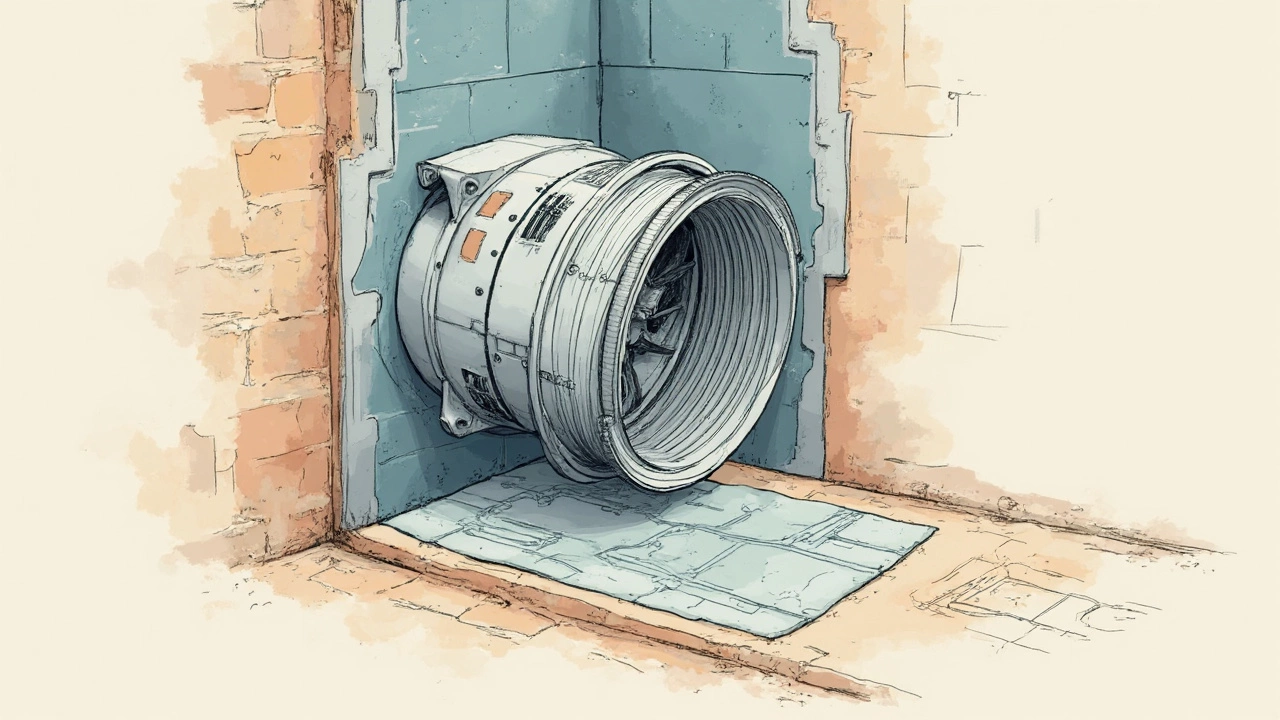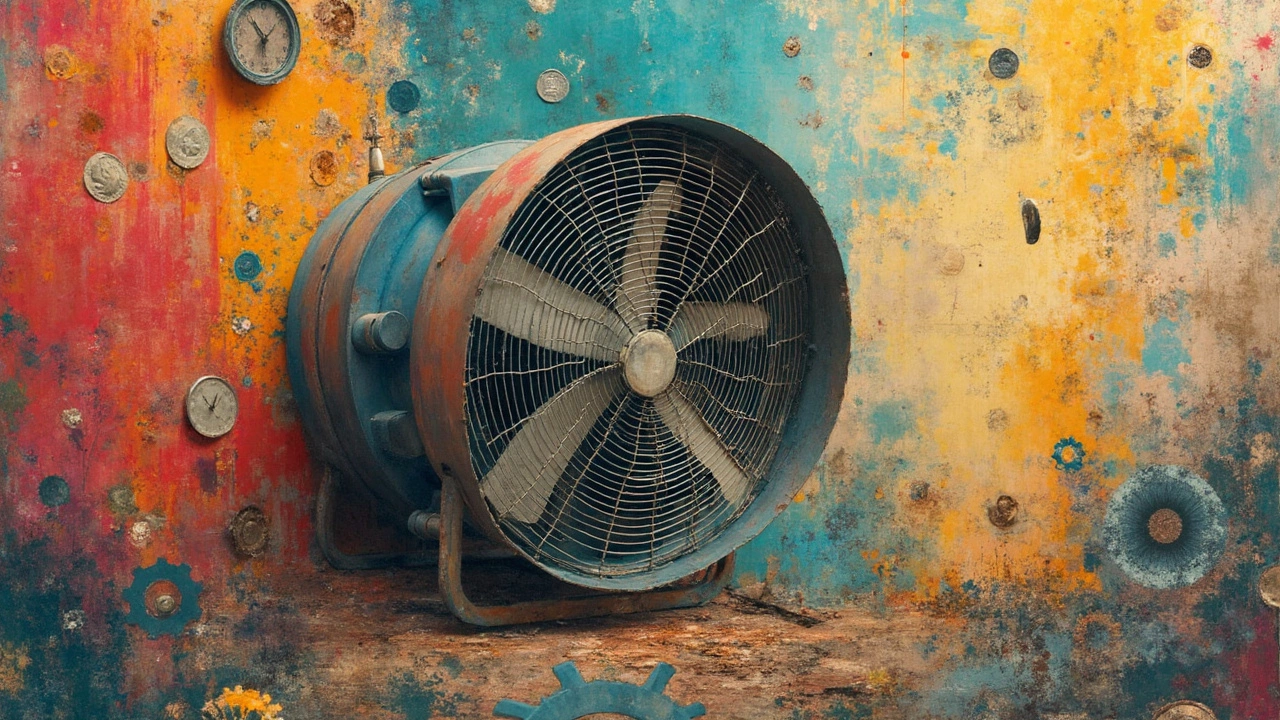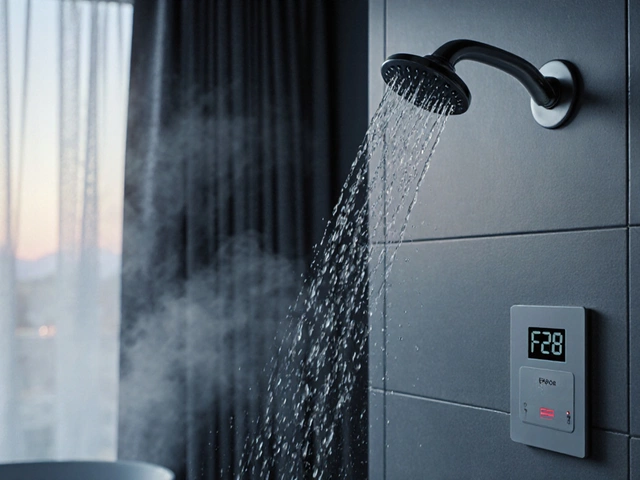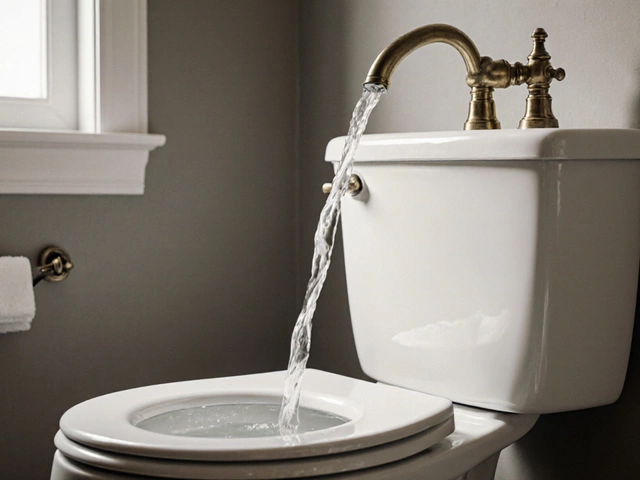Ever wondered if it's okay to just leave your extractor fan running indefinitely? You're not alone. These little guys are essential in keeping our kitchens and bathrooms fresh, but knowing when to turn them off can make a big difference.
The magic of extractor fans is in their simplicity—they whisk away steam, odors, and all the stuff that makes the air a bit iffy. But here's the thing: letting them run non-stop isn't always the best idea. Sure, they work wonders for cutting down moisture, but they also chew up electricity and aren’t immune to wear and tear.
Let's break it down. If your bathroom's looking like a tropical rainforest after every shower, leaving the fan on for a little longer might help. But once the mirror's cleared up, it's usually mission accomplished. In the kitchen, running the fan while cooking up a storm is great, but after the smoke's cleared, the fan deserves a break too.
- Understanding Your Extractor Fan
- The Pros and Cons of Continuous Use
- Safety Tips and Best Practices
- Simple Maintenance and Troubleshooting
- Maximizing Efficiency and Energy Use
Understanding Your Extractor Fan
So, what's the deal with extractor fans anyway? These devices are your home’s unsung heroes, quietly getting rid of moisture, odors, and smoke. But to keep them in top shape, you need to know a bit about how they work.
Types of Extractor Fans
Extractor fans generally come in two types: ducted and recirculating. Ducted fans vent the air outside, which is great for getting rid of moisture and smells. Meanwhile, recirculating fans filter and return the air back into the room. Each has its perks, but choosing the right one depends on how your home is set up.
Components of an Extractor Fan
Your average extractor fan isn’t too complicated. It has a motor, fan blades, a housing unit, and some can have a filter if they’re a recirculating type. The motor powers the blades, creating an airflow that moves the unwanted air either outside or back into the room after filtration.
Understanding Fan Specifications
Extractor fans come with different specifications, like power, airflow rate (measured in cubic meters per hour), and noise level (measured in decibels). An ideal fan for your bathroom shouldn’t be too loud nor should it be underpowered for the space it's meant to serve. A home's ventilation system will usually power up to around 21-23 dB for quiet operation and deliver 60-80 m³/h for smaller areas.
| Type | Noise Level | Airflow Rate |
|---|---|---|
| Ducted | 20-25 dB | 150-500 m³/h |
| Recirculating | 25-35 dB | 100-300 m³/h |
Factors to Consider
When picking an extractor fan, think about where it’ll be used. Kitchens usually need more powerful fans because they handle more smoke and steam, while for bathrooms, a lower capacity could do the trick unless you've got a Swiss spa setup in there!
Having a good grasp on your extractor fan's features can help you make it work more efficiently and prolong its life. Avoid turning it into a 24/7 operation. Instead, use it when you really need it, and make sure it gets a break to cool off now and then.
The Pros and Cons of Continuous Use
Leaving your extractor fan on for extended periods can sure have its perks, but it ain't all roses. Let's weigh the goodies against the baddies so you can make a smart choice.
Pros of Continuous Use
First off, extractor fans are lifesavers when it comes to tackling humidity and unwelcome smells. Keeping them running a bit longer can stop mold from calling your home its own. Especially in steamy bathrooms and culinary-filled kitchens, continuous ventilation can help keep the air fresh and healthy.
If you're someone who loves to cook up a storm or takes long hot showers, a longer operation time might be what's needed. Running the fan longer could ensure that all excess moisture is vented out properly, preventing problems like peeling paint or warped cabinetry.
“A well-ventilated home is a healthier home,” says Jane Martin, a leading home ventilation expert. “Extractor fans, when used correctly, play a crucial role in maintaining indoor air quality.”
Cons of Continuous Use
But, let's not forget: running your fan all day could send your electricity bill sky-high. Most extractor fans aren't massive energy hogs, but those pennies can add up over time. Besides, running non-stop can wear down the motor, leading to costly repairs or even replacements sooner than you'd like.
And speaking of costs, there's also the matter of noise. Continuous fan use means constant background noise, which might not bother you during a party but could be annoying when you're trying to concentrate or relax.
Balancing Act
So, what's a smart home dweller to do? Embrace moderation. Use the fan when you need it most, like eliminating smoke or steam, and give it a rest when the job is done. Advanced models often come with inbuilt timers or humidity sensors that make the job easier. These features can automatically switch off the fan once the air is clear, helping to save energy while extending the lifespan of the unit.
| Fan Usage | Energy Cost |
|---|---|
| 1 hour/day | $10/month |
| 8 hours/day | $80/month |
The bottom line? Be mindful of how long you keep your fan running, and you'll get the best of both air quality and cost efficiency.

Safety Tips and Best Practices
So you're all set to keep that extractor fan purring like a kitten? Good call, but there are some things you need to keep in mind to ensure it's running safely and efficiently.
Regular Cleaning Routine
Dirt and grime are your fan's worst enemies. Regularly cleaning the fan's vents and blades prevents dust buildup, which can hinder performance and possibly lead to malfunctioning. An easy trick? Warm soapy water and a soft cloth usually do the magic. Just remember to turn off the power before diving in.
Avoid Overuse
It's tempting to leave the fan on for ages, especially after a big cooking session. But overuse can cause the motor to burn out sooner than you'd like. A safe bet is to run it for about 20 minutes after cooking or showering. Consider a fan timer if you're someone who forgets.
Check for Unusual Sounds
Extractor fans aren't chatty by nature. If yours starts making a racket, it’s time for a health check. Unusual noises might signal that parts are loosening up or wearing out—something you don't want to ignore.
Ensure Proper Installation and Ventilation
Proper installation is key. A wonky fan could lead to inefficient work and increased energy usage. A fan should be vented outdoors to help get rid of all the unwanted air particles effectively. If you’re unsure how it’s been installed, consulting with a fan repair expert might be wise.
| Common Causes of Fan Noise | Solution |
|---|---|
| Loose parts | Tighten screws and fittings. |
| Clogged vents | Regular cleaning required. |
Remember, a little attention here and there goes a long way in keeping your fan in top shape. And when in doubt, never hesitate to call in the expertise of a fan repair professional. They can offer insights and fixes that prevent minor issues from spinning out of control.
Simple Maintenance and Troubleshooting
Ever thought about what goes into keeping your extractor fan humming smoothly? With a few easy-peasy steps, you can make sure it’s ready to beat down steam and odors when needed.
Regular Cleaning
Dust and grease are enemy number one for your extractor fan. To clean, turn off the power and remove the fan cover. Wash it with some warm soapy water and let it dry thoroughly before putting it back. If your fan has filters, check them regularly—replace or clean them if they’re clogged.
Inspecting the Motor
Is your fan making strange noises? It might be time to check the motor. A little lubrication can go a long way if parts get stiff. But if you find any burnt smells or the fan still roars like a jet engine, calling in a pro might be the safest bet.
Tightening Loose Screws
Sometimes, hums and rattles are just loose screws begging for a tightening. Grab a screwdriver and give your fan a once-over to secure any wobbly bits.
Checking the Power Supply
If your fan’s suddenly silent as the grave, it might just be a power issue. First, see if the fuse hasn’t blown or a breaker’s tripped. And yeah, always check if it’s plugged in—happens to the best of us.
- Turn off the power before inspecting the fan.
- Inspect and clean the fan grill and blades.
- Check the function of the fan switch and make sure it's not stuck.
- Test the wiring for any obvious signs of wear or damage.
Keeping the Fan Efficient
To keep things running efficiently, don't overuse your fan. Let it take breaks. An overheated fan might trip its built-in thermal cutout to prevent itself from burning out.
Following these steps will keep your extractor fan in tip-top shape and save you a pretty penny on repairs or replacements.

Maximizing Efficiency and Energy Use
Extractor fans are handy, but running them efficiently is key to keeping utility bills low and air quality high. A few tweaks can make a big difference.
Use Timers or Sensors
Ever forget to turn off the extractor fan? Using a timer can save you both energy and hassle. Set it to run only when needed, like during and after cooking or showering. Some fans even come with humidity sensors that switch on automatically when there's too much moisture in the air.
Optimize Airflow
Make sure the fan is pulling its weight by checking its installation. Ensure there's enough space around it for air to move freely. If your fan is in the kitchen, keep it hood clear of dust and grease. Regular cleaning helps it operate at peak performance.
Choose Energy-Efficient Models
When replacing or upgrading your fan, opt for energy-efficient models. Look for those with a high airflow-to-energy ratio. They might be a tad pricier upfront, but they’ll save you cash in the long run.
Regular Maintenance is Key
A well-maintained fan is an efficient one. Check for blockages, clean the blades, and inspect for any signs of wear. A little TLC goes a long way in ensuring your fan's longevity and efficiency.
Consider the Placement
If your fan's location isn't ideal, it may not be doing its best work. In kitchens, install them close to cooking areas. For bathrooms, placing them near the shower or bath helps suck up steam quickly.
| Benefit | Action | Impact |
|---|---|---|
| Lower Energy Bills | Use a timer or sensor | Reduce unnecessary power use |
| Better Air Quality | Optimize airflow and placement | Efficient removal of odors and moisture |
| Long-lasting Fan | Regular maintenance | Minimize wear and tear |
Remember, using your extractor fan wisely not only helps the environment but also your wallet. Small changes add up to a big impact!




